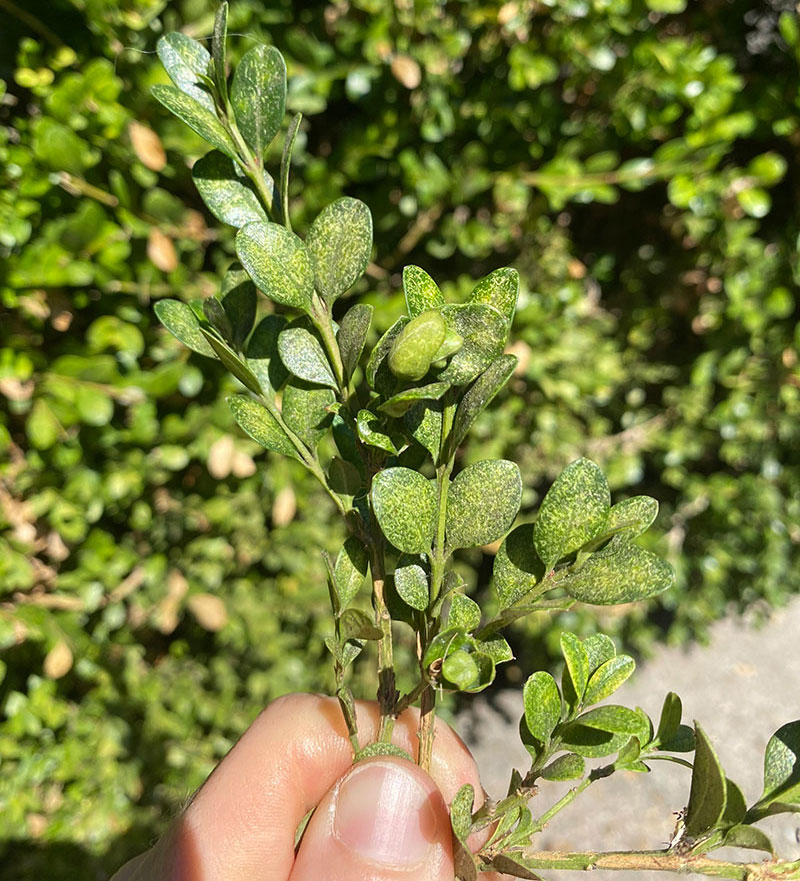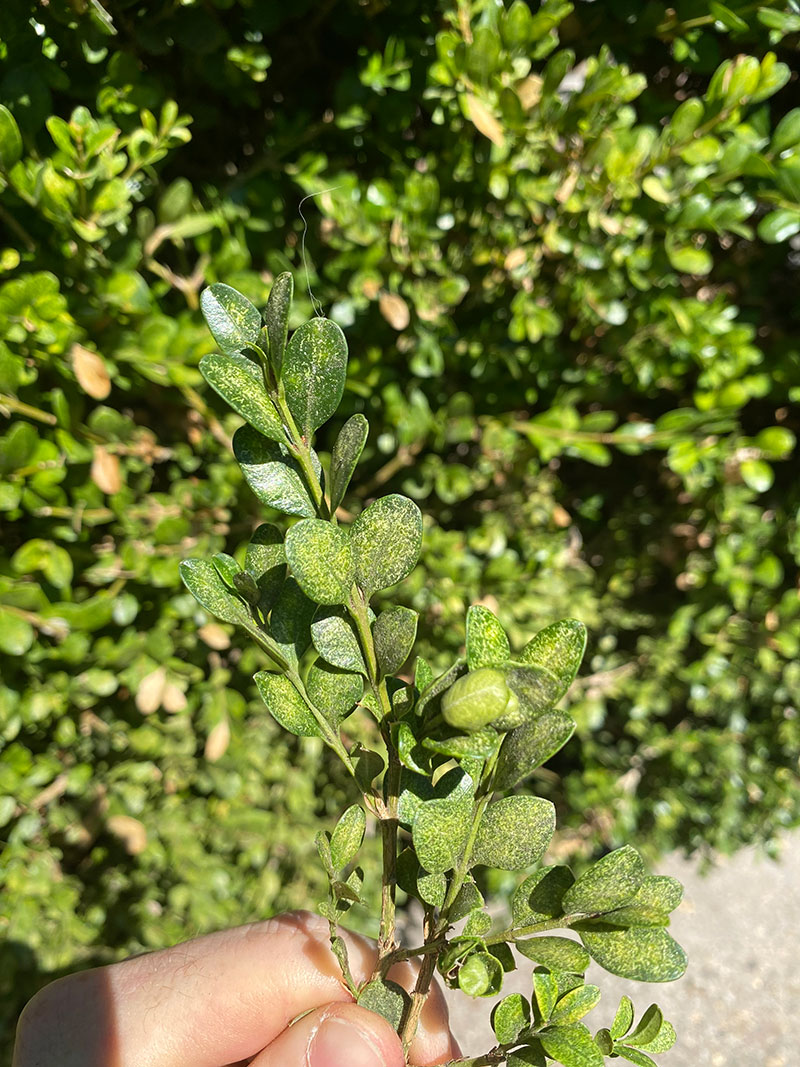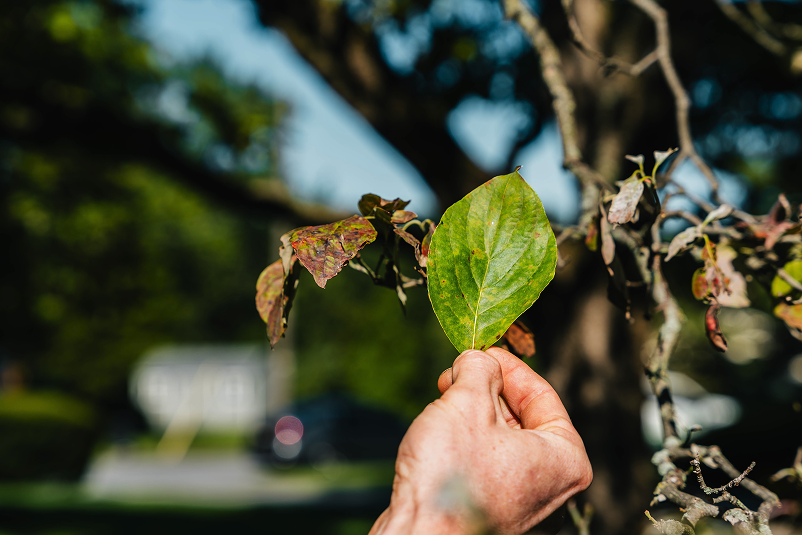The Truth About Tree Mites
Tree Mites, close cousins to Spiders and Ticks, are small members of the arachnid family, measuring less than 1 millimeter in size. These tiny pests, often unseen by the naked eye, live by sucking the sap from tree leaves. As they feed, they weaken your trees, making them more susceptible to diseases and other problems.
How We Treat Mite-Infested Plants & Trees
Tap for more information
Inspection and Diagnoses
Our ISA Certified Arborists will first conduct a thorough inspection of your tree. This includes examining the leaves for signs of Mite damage, such as stippling, discoloration, or webbing. We will also identify the specific type of Mite affecting your tree, as different Mites require different treatment approaches.
Targeted Treatment
We use miticides mixed with Horticultural oil. The oil can smother adults, babies and eggs while the miticide is a systemic insecticide that kills Mites when they feed, offering weeks worth of control in a single application.
Follow-Up and Monitoring
Our arborists will recommend a follow-up monitoring plan to ensure the Mites are eradicated and don’t return. This may involve additional treatments or preventative measures to create an environment less hospitable to Spider Mites. We can also provide guidance on proper tree care practices that promote overall tree health and resilience against future infestations.

Telltale Signs of a Tree Mite Infestation
A healthy tree has a vibrant, full appearance. But when Spider Mites attack, they slowly drain the life out of leaves. Look for these signs of a potential infestation:
- Stippling: Leaves develop a speckled or bleached appearance due to the Mites’ feeding activity.
- Yellowing and Bronzing: As the infestation worsens, leaves lose their chlorophyll, turning yellow or bronze.
- Webbing: Fine webbing may be visible on the underside of leaves or branches, particularly during heavy infestations.
- Leaf Drop: Heavy Mite infestations can cause premature leaf drop, leaving your trees looking bare and unhealthy.
Benefits of Professional
Tree Mite Treatment
At Rick’s Certified Arborists, we understand the urge to tackle tree care yourself. However, when it comes to delicate tasks like tree Mite treatment, professional intervention can make all the difference. Our Certified Arborists have the expertise to identify the specific Mite species plaguing your trees and, more importantly, select the most effective treatment method.
DIY solutions often rely on one-size-fits-all approaches, which can be ineffective or even harmful to certain tree varieties. We utilize targeted treatments for complete eradication while minimizing the impact on your trees’ health. Additionally, our arborists can assess the overall health of your trees, pinpointing underlying weaknesses that might have let the Mites thrive in the first place. This exhaustive approach not only eliminates the current infestation but also strengthens your trees’ defenses for the future.

Need Tree Mite Treatment in West Chester, PA? Call Now!
Are your trees showing signs of Spider Mite damage? Concerned about the health of your landscape? Don’t wait until it’s too late. Contact us at Rick’s Certified Arborists today for professional tree Mite treatment in West Chester, PA. Let us help you protect your trees and preserve the beauty of your property.





